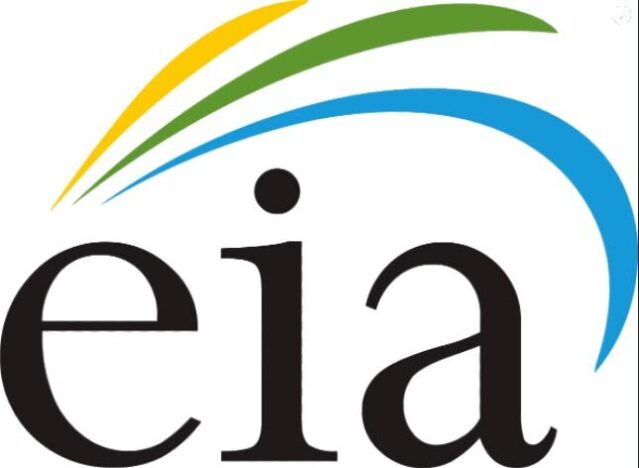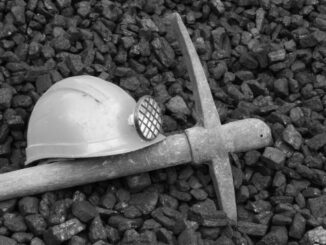
The EPA has for the first time proposed rules that would impose standards on wastewater released from coal plants, including contaminated water that has seeped through coal ash and water drained from coal ash impoundments in preparation for closing.
Thus far, coal plants have had much leeway to essentially dump contaminated wastewater into lakes and rivers, including wastewater from scrubbers that remove sulfur dioxide from emissions, and water used to clean bottom ash out of boilers.
Coal plant wastewater has until now been subject only to 1982 standards that allow it to be deposited in coal ash ponds, where it may overflow into water bodies and contribute to the contamination of groundwater that happens at the vast majority of coal ash sites.
“Pretty much all of these plants, whether sitting on shores of the Great Lakes or rivers or streams, they’ve historically drawn water from that source and discharged pollution back into it,” said Earthjustice senior attorney Thom Cmar.
“Some plants literally have for decades been able to get away with never having to do anything other than just use an ash pond, historically considered part of their wastewater treatment system. They’re letting the pollution flow right into a waterway like it’s an open sewer. This has been a long fight where that practice is finally going to end.”
The Environmental Protection Agency estimates the proposed wastewater rule, released March 7, would prevent over 584 million pounds of pollutants, including arsenic and mercury, from being discharged into U.S. waterways annually. The EPA will hold online public hearings on April 20 and 25, and public comments can be submitted through May 30. Following those steps, the EPA will finalize and implement the rule.
Sign up for Energy News Weekly
Get the most important energy news of the week delivered directly to your inbox.
The rule proposes a standard of zero pollutants discharged from water used in scrubbers and boilers, and requires the best available technology to achieve this goal. Filtration with fine membranes, chemical treatment, and recycling water back into the plant can avoid pollution from these wastewater streams, the EPA proposes. The rule also for the first time requires that leachate — water that becomes contaminated passing through coal ash ponds — be treated with chemicals to remove or neutralize pollution.
The new mandates may hasten the closure of coal plants nationwide, experts say, if coal plant operators elect to close sooner rather than invest in the required technology. Laws like the Clean Water Act that rely on the best available technology are meant to be periodically updated as technology improves. In 2010, Earthjustice filed a lawsuit demanding coal plant wastewater standards, and in 2015 the EPA proposed standards. But that proposal was never finalized and the Trump administration instead rolled back protections.
“EPA introduced loopholes and extended the compliance deadlines, which all added up to a pretty significant weakening of the rule when in fact this is a rule that EPA is required to update regularly for all polluting industries based on what technology is out there to reduce and ultimately eliminate pollution,” Cmar said. “Now we’re eager to see EPA follow through with the strongest rule possible as quickly as possible.”
The proposed rule does not cover the contamination that seeps from unlined coal ash ponds into groundwater. That pollution is regulated by 2015 coal ash rules that require monitoring, cleanup and an end to such groundwater pollution. For years regulators and companies had largely ignored those mandates, but in the past year and a half the EPA has been actively enforcing them.
Coal ash 101: Everything you need to know about this toxic waste
As coal plants close nationwide, they leave behind nearly a billion tons of toxic coal ash. The Medill School of Journalism spent months investigating the coal ash threat and how regulators, companies, and environmental groups are handling it.
Here are the basics that will help you understand this looming threat.
What is coal ash?
Coal ash is the toxic byproduct of burning coal to generate electricity. It contains heavy metals that can contaminate groundwater, lakes, and rivers.
Where is coal ash located?
Coal ash is stored in more than 700 ponds and landfills nationwide, most of them unlined. Ash can also be recycled — known as “beneficial reuse” — in which it is used to make concrete or build roads.
What is the Coal Combustion Residuals (CCR) Rule?
In 2015, the EPA established rules for coal ash units, requiring companies to test groundwater, remediate contamination, and make plans to close the units. Companies have to post groundwater monitoring data and closure plans online.
The rule excludes hundreds of “legacy ash ponds” that closed before the federal rule took effect in 2015, yet these ponds are still causing serious groundwater contamination. The rule also does not cover coal ash that was over decades dumped and scattered around coal plant sites and even surrounding areas, often used to build up berms or fill in land.
Is coal ash contaminating our water?
Data posted by companies shows that contaminants around coal ash ponds frequently exceed limits set by the EPA, sometimes exponentially. Private wells used for drinking water can be and have been contaminated by coal ash. Rivers and lakes used for recreation and municipal water supplies can also be contaminated by coal ash.
What’s in coal ash?
Boron
Boron is linked to reproductive problems like low birth weight and is also toxic to aquatic life.
Lead
Lead is a potent neurotoxin linked to swelling of the brain and nervous system damage.
Lithium
Lithium is linked to liver and kidney damage as well as neurological diseases and birth defects.
Arsenic
Arsenic is linked to nervous system damage and higher rates of cancer.
Molybdenum
Molybdenum is linked to gout, high blood pressure, and liver diseases.
Cobalt
Cobalt is linked to thyroid damage and blood diseases.
How is a coal ash pond closed?
Coal ash sites need to close after getting their final shipment of coal ash, if they are polluting groundwater above certain standards, or if they fail to meet other safety criteria. The rules say all unlined ponds needed to stop accepting waste by April 2021, though some requested exceptions and have continued filling with coal ash.
Cap-in-place closure
A protective cover is placed over the coal ash so rainwater doesn’t get in and cause flooding or increased leaching into groundwater. If the coal ash is left in contact with groundwater or permeable rock, it can continue leaching contaminants even when capped.
Removal closure
Coal ash is excavated from a pond, dried, and moved to a lined landfill above the water table. Companies may be able to build a landfill on the power plant site. Shipping coal ash to landfills off-site means heavy truck traffic or shipping by barge or rail.
Who pays for coal ash cleanup?
Companies
The owners of coal ash sites — utilities or power companies and their shareholders — can pay the cost of coal ash cleanup, often hundreds of millions or even billions of dollars across multiple sites.
Ratepayers
Utilities can seek approval from state public service commissions to bill the cost of coal ash cleanup to ratepayers. They can even seek a profit as a portion of the costs.
Government
If coal ash is designated a Superfund site, the EPA can make the responsible parties — utility or power companies — pay for the cleanup. The government can also pay for the cleanup from a pool of Superfund money, especially if the companies no longer exist or can’t pay.
Compiled by Sruthi Gopalakrishnan.
The newly proposed rule under the Clean Water Act is “the other side of the coal ash coin,” as Cmar described it, covering water drained from ponds when they are being emptied and leachate that is sometimes collected from coal ash impoundments. Such leachate collection is an effort to avoid groundwater contamination, but an effort that ultimately becomes futile if that leachate is then released into water bodies without adequate treatment. Cmar said the new requirement for leachate is “the first of its kind” and a significant improvement.
But the proposed rule is more open-ended in regards to water drained from coal ash ponds as they are being emptied and closed. The rule proposes to deal with such “legacy wastewater” on a site-by-site basis.
“EPA has never set a federal standard around the treatment of that type of dewatering,” Cmar said. “This rule for legacy wastewater continues to defer to site-by-site analysis, which will primarily mean the states are the ones making the decisions.”
Meanwhile, the proposed rule exempts plants from the new mandates if they promise to stop burning coal by 2028 or, in some cases, December 2029. It also allows plants that have already installed less-effective wastewater pollution controls to keep operating through 2032 without further upgrades.
These delays could mean that plants closing coal ash ponds before those deadlines are able to release the resulting wastewater and leachate without meeting any new requirements.
“If those sites are all closing between now and 2029, the proposed rule is effectively saying go ahead and drain those ponds and no additional treatment will be required unless the state requires it,” Cmar said.
The 2015 federal coal ash rules don’t cover plants closed before the rules took effect, but an Illinois state coal ash law covers such legacy sites. Dynegy Midwest Generation is planning to empty coal ash from ponds on the bank of the Middle Fork of the Vermilion River in Southern Illinois and move the ash to a dry landfill on higher ground.
Advocates have long fought for closing the coal ash ponds to protect the Vermilion River from seepage and possible collapse of ash held back by the eroding banks.
Dynegy plans to build a trench to collect leachate from the coal ash as it is being removed, a plan advocates support. But they are concerned that the polluted water from the trench will ultimately make its way into the river, after being placed in a secondary treatment pond, as Dynegy proposes. Ironically, if Dynegy proceeds with its plan, the removal of the ash that advocates sought to prevent from polluting the river could ultimately mean the contamination still makes its way into the river.
“It’s the old argument about dilution being the solution to pollution,” Cmar said. “It’s what we’ve been working against in this space for so many years. Especially with a sensitive waterway like the Middle Fork, a naturally meandering stream that thousands of people each year use for canoeing and kayaking, an uncontrolled release of pollution should not be allowed.”
Local advocates are asking the Illinois EPA to deny Dynegy’s proposal and, in permits the company needs, require stringent treatment of any wastewater or leachate before it is discharged. A spokesperson for Vistra, Dynegy’s parent company, did not respond to requests for comment.
Andrew Rehn, water resources engineer at the Prairie Rivers Network, said the Illinois EPA should act in accordance with the proposed federal wastewater rule, requiring leachate treatment, even if it has not been finalized or taken effect by the time the state agency makes its decision. Rehn noted that the state process has been moving slowly and Dynegy doesn’t appear likely to remove ash within a decade. A silver lining might be that the site becomes subject to the federal wastewater rules, but it also means more time for coal ash to contaminate groundwater and the river as it sits in unlined ponds.
“I’d rather have them act sooner than later because we need to do something,” Rehn said. He added that the National Pollutant Discharge Elimination System permit that the state must issue isn’t well suited to intense, short-term releases of wastewater like the closure of a coal ash pond.
“The way these permits are structured, it’s usually for a continual discharge,” Rehn said. “‘You’re a coal plant, you’ll be regularly discharging this wastewater, here are your limits.’ They don’t really contemplate this single activity of dewatering that takes a few months but is not a continuous activity. We’ve fought hard for more monitoring while they’re discharging this highly concentrated stuff.”
The proposed federal rule similarly does not provide for especially frequent monitoring of intense wastewater releases during a coal ash dewatering.
“This is definitely a place where Illinois EPA could step up,” Cmar said. “It’s important to emphasize that these [new proposed EPA wastewater] regulations set a federal floor for eliminating pollution, and states are always able to require greater reductions than the federal standards when they find it justified.”



